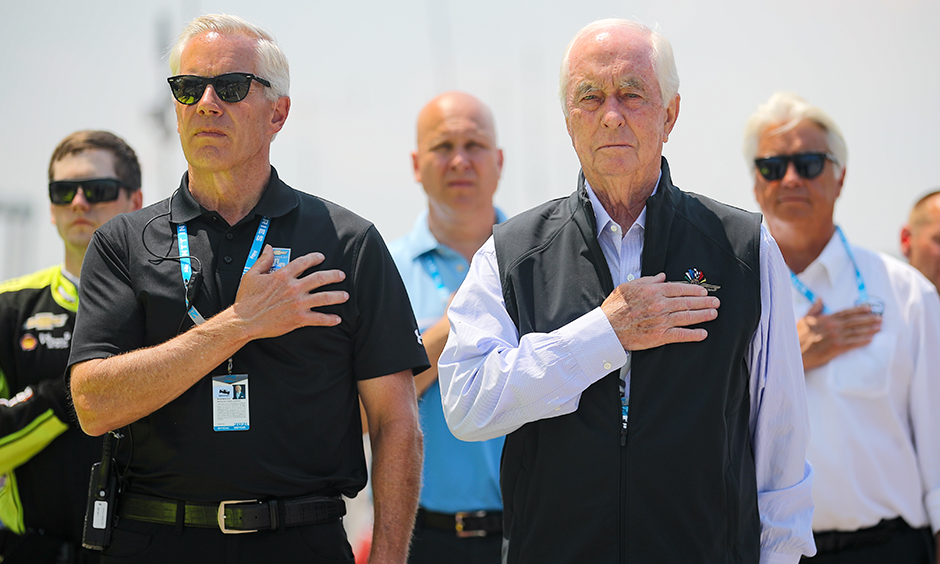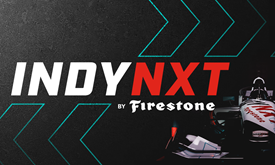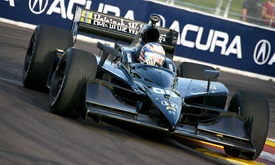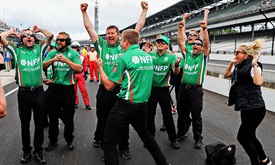Five Questions with … Bud Denker
NOV 04, 2022
Bud Denker is driving the NTT INDYCAR SERIES back to Motor City.
The routine day job for the president of Penske Corp. is overseeing a company of nearly 70,000 employees that hits around $40 billion in revenue. However, he has spearheaded another effort as chairman of the Chevrolet Detroit Grand Prix presented by Lear and is at the forefront of showcasing North America’s premier open-wheel championship on streets that haven’t heard the echo of engine noise in over 30 years.
INDYCAR.com’s Joey Barnes spoke with Denker regarding the recent updates for next year’s return to downtown Detroit.
Q: You had a reception recently with event partners to divulge updated information and vision for next year’s Detroit Grand Prix. What is the latest?
Denker: We gave an update on these renderings and how things are going to look. People now have an idea of what they can expect to see in downtown next year from the events to the concerts to the Winner's Circle along the riverfront, the dual pit lane. We've got an artist rendering of that. But we also gave an update on the progress we've made on construction. As you might know, Detroit roads aren't the best, and we have had to work with three entities to get this thing done. Little did I know the city owns some of our circuit, the state owns some of our circuit, and General Motors own some of our circuit. To get all three companies engaged with an engineering study, topography study, a LiDAR study, we only have an inch variance in terms of the surface for our cars to go over because they run so low and Jefferson Avenue alone, just in our part of the circuit, has 164 manhole covers.
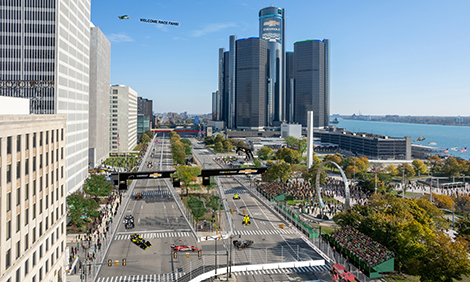 They’ve all got to be smooth. They're not now. So, that's the kind of effort we've been up against in terms of getting the road construction done. And I'm pleased to say that by the end of November, we will have all road construction done. We just started it two months ago, which is an amazing feat for any municipality, but also three entities we had to deal with. The dual pit lane is first of its kind. Some people are going to pit to the left, some people pit to the right, and because qualifying for INDYCAR is done for the previous road course race or street circuit, we'll know if you're going to be on the left side or right side before you get here. So, the cars can in effect have their nozzles that have to go on left side or right side prepared ahead of time.
They’ve all got to be smooth. They're not now. So, that's the kind of effort we've been up against in terms of getting the road construction done. And I'm pleased to say that by the end of November, we will have all road construction done. We just started it two months ago, which is an amazing feat for any municipality, but also three entities we had to deal with. The dual pit lane is first of its kind. Some people are going to pit to the left, some people pit to the right, and because qualifying for INDYCAR is done for the previous road course race or street circuit, we'll know if you're going to be on the left side or right side before you get here. So, the cars can in effect have their nozzles that have to go on left side or right side prepared ahead of time.
So, imagine these cars coming down pit lane, some going left, some going right, merging at the end of pit lane into a single file to get back out of the street to merge into traffic. The visual of that with the suites behind is amazing because now, if you're a suite holder, you don't have to turn your head for a thousand feet down to the left of the right seat pit lane; it's all in front of you. All the cars are in front of you. The view of it is just going to be amazing. And we're using the same company as we used in Iowa for our suites that also do the par-3 course at the Waste Management Open in Phoenix for our suites. They'll be off the ground by over 40 feet. In Belle Isle, for instance, they were off the ground 13 feet on the second floor. Now, we're going up that high to get this amazing view over the pit boxes, over the road course wall, to allow you to see on-track action, as well as this entire panoramic view you're going to have in front of you. So, those are some things we showed on Thursday, as well as begin talking about the entertainment. This event will be an event in downtown. This is not going to be a race. We can't have races; we got to have events. There's a big, big difference. You saw in Iowa last year, right? Iowa was an event. Over 70 percent of the people that came to that race had never been to a race before. That's what we're going to have in Detroit because if you recall, 50 percent of the race circuit will be open for free.
That also has never been done before. Hart Plaza, which is adjacent to the speedway, can hold 25,000 people. It's a park where they have concerts. We'll have our concerts open for free. The riverfront in front of our racetrack, open for free. Anywhere but our grandstands and our chalets and behind the pit lane is free. So, it's all about inclusiveness, all about bringing people down for a festival that have no idea what a race is, and then maybe love what's going on around the race and come back next year as a paying customer and bring our communities, whether you're 20 miles outside Detroit, coming down in different communities of Detroit, to be part of this thing is what we're creating here. Very, very different from anything else being done in any of the city because of how we're going to make it inclusive because of being 50 percent free.
Q: Making it more of an event sounds like taking the Snake Pit model that we have at the Indianapolis 500 presented by Gainbridge?
Denker: No doubt, and in fact we're already working on some of the bands with the DJs for the Snake Pit next year, why can't I contract a couple of those to come to Detroit the following week, right? And be in our Plaza area for these great performers to do the same thing. So, we’re looking at having amazing entertainment adjacent to our track. If they want to watch the race or not, so be it. Just like the Snake Pit deal. I mean, how many people in the Snake Pit watch the race? Very few. Same thing in Detroit. So, we're going to have parties at night. We’re going to have entertainment and some very chic events going on Saturday night. We've got a Grand Prix fundraiser we've done for years on Friday night; we'll raise $500,000, $600,000 for charity again in downtown Detroit. So, each night will have an element to it. Much like you see in the Formula One scene where it's fashion, it's music, it's style, it's cars, it's technology, same vibe. You're going to see us integrate into what we're doing here in Detroit. Once again, not a race. An event.
Q: What is the process of deciding on a layout and renderings for a street circuit and event such as this, then figuring out how things are going to be constructed?
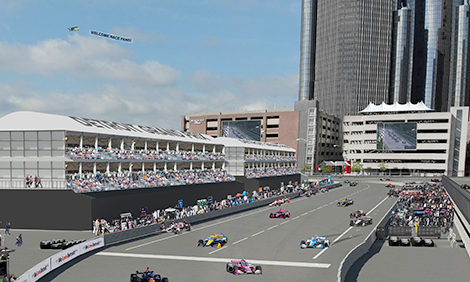 Denker: Well, the rendering of the track and the design of the circuit had to take in several different considerations. First of all, we couldn't impede business. We couldn't stop business in downtown Detroit. Before the pandemic, Detroit was abuzz with activity and people. That obviously has slowed since the pandemic because a lot of companies have not come back to work full time yet, so we couldn't stop business because the old Formula One track back in the 90s and 80s went through some parts of the city you could never do now because it would stop business. So that is number one, we couldn't stop business. Number two, there's a tunnel in downtown Detroit, the Detroit-Windsor Tunnel, links our countries (Canada and the United States) together. We couldn't stop that. So, the design of our track will be one that doesn't impact one business.
Denker: Well, the rendering of the track and the design of the circuit had to take in several different considerations. First of all, we couldn't impede business. We couldn't stop business in downtown Detroit. Before the pandemic, Detroit was abuzz with activity and people. That obviously has slowed since the pandemic because a lot of companies have not come back to work full time yet, so we couldn't stop business because the old Formula One track back in the 90s and 80s went through some parts of the city you could never do now because it would stop business. So that is number one, we couldn't stop business. Number two, there's a tunnel in downtown Detroit, the Detroit-Windsor Tunnel, links our countries (Canada and the United States) together. We couldn't stop that. So, the design of our track will be one that doesn't impact one business.
How's that possible? It's just the way the track is laid out and the way our businesses are laid out along our corridor. On number two, the tunnel will stay open because I'm going to allow cars to come into our circuit, drive 12 feet away from a car going 190 miles an hour next to you as you drive into the tunnel and out of the tunnel. Imagine that. It's like how Sao Paulo (Brazil) used to be; we used to run parallel along the freeway there in Sao Paulo, we’re going to have cars, as you move along the street to the left, 12 feet away from you behind a wall will be going 180 miles an hour. So, we’re allowing traffic to come in and out of the city using tunnels, obviously to keep traffic flowing throughout downtown Detroit.
So, that is truly unique because I'm impeding nobody's business. In fact, we’re going to allow cars to pull into the circuit to park. There's four parking decks that are within 200 yards of the paddock area, so imagine the guests of the teams coming down and parking 200 yards away from the transporters, the paddock. There's chalets because we're allowing all traffic to still come into the circuit using tunnels under the bridges to get to their parking areas and to get to the Detroit-Windsor tunnel. First of all, we could not impact business. Secondly, I had no idea there were three entities involved in these street circuits.
I figured a street downtown must be all the city, right? The city must own all that. Yeah, well, no, I learned that Jefferson Avenue is a state federally funded roadway; that's our straightaway. We have almost 7/8th of a mile on Jefferson Avenue, and that's owned by the state. So, they had to do their portion of it. I hired the engineering company for all three entities. We paid for that. So, we did the engineering work, handed the information to these entities, and said, 'OK, you go about finding your construction company, your contractors to make this work.' Same thing applied for the city. Same thing applied for General Motors. So, the city is probably 90 percent done with their construction work. The state is probably 70 percent done with their construction work. And General Motors is probably about 60 percent done. But all of it will be done at the end of November, including pouring 40,000 square feet of new concrete in the pit lane area because right now, the pit lane is a parking lot that's asphalt. Roger (Penske) and I, and Michael Montri (Detroit GP president) all wanted a concrete pit lane that will just look amazing to the sponsors and to the teams like we have in Belle Isle now, a concrete pit lane and not asphalt. That's a huge cost obviously to do that, but that'll be done the next two weeks, as well.
Q: Belle Isle was a great circuit that produced some good racing. What kind of action do you think downtown Detroit could produce to make it even more exciting than what we’ve had?
Denker: Well, you're right. Belle Isle was a great track - 2.3 miles, multiple passing zones, technical as hell, a very, very difficult 13-turn track. We're going to have a nine-turn track here, but at tremendous speeds. Our track will have elevation changes going down to the river and back away from the river. It's hard to see on a piece of paper, but when you see it, when you're here yourself, you'll see a lot of elevation changes and a lot of technical corners, as well. What I love about it is because we're a shorter track, 1.7 miles, the public will see the cars coming by probably 30 times more than Belle Isle. Down in St. Pete, it's a typical 1.7-, 1.8-mile course. They do maybe 110 laps, right? I love that idea that the fans are going be able to engage more often by having more laps on the racetrack. And the second thing is, you know, Belle Isle, while it was 2 miles away from Detroit, it may as well have been 50 miles away from Detroit. The reason why is we had to bus everybody onto the island for the most part and bus them off. Well, guess what? When they park downtown in a parking lot and get to a bus, they go to the island, they come back, they get in their car, and they leave. It's not going to happen in Detroit. In Detroit you're going to come downtown, you're going to park, you're going go to walk to the racetrack or park inside the racetrack and be part of it. And after the race, you're going to probably hang around and go to a restaurant because you're already there. There are 200 businesses within 15-minute walk of our racetrack.
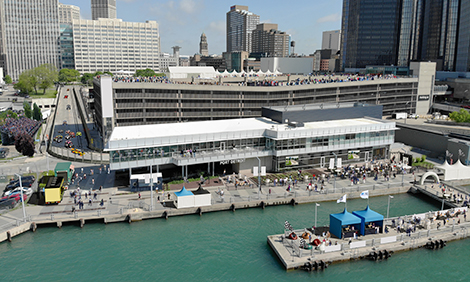 So, that's how we're engaging the city. Very, very differently than Belle Isle did. I hoped they'd hang around Belle Isle, but they hopped in their car and went back home. The other thing about it, too, is Canada. Canada's got a rich history of open-wheel fans. When they come through the Windsor Tunnel, they are a minute away from parking their car because they never have to leave the racetrack. They're inside the racetrack. When they come through the tunnel, they're inside of it, which is amazing, right? So, all of those access points for the city, for Canada, for the citizens, for our fans, for the teams are very different. There are 1,500 rooms at the Marriott and the Renaissance Center where GM's headquarters are, you're in the middle of the race circuit, how convenient is that for the restaurants and people to use?
So, that's how we're engaging the city. Very, very differently than Belle Isle did. I hoped they'd hang around Belle Isle, but they hopped in their car and went back home. The other thing about it, too, is Canada. Canada's got a rich history of open-wheel fans. When they come through the Windsor Tunnel, they are a minute away from parking their car because they never have to leave the racetrack. They're inside the racetrack. When they come through the tunnel, they're inside of it, which is amazing, right? So, all of those access points for the city, for Canada, for the citizens, for our fans, for the teams are very different. There are 1,500 rooms at the Marriott and the Renaissance Center where GM's headquarters are, you're in the middle of the race circuit, how convenient is that for the restaurants and people to use?
On Belle Isle, we couldn't make it 50 percent open to the public because two-thirds of the track was closed to the public. They were on the back straightaway; we couldn't get people back there. They were around the lagoon; we couldn't get people back there. So only one-third of the racetrack on Belle Isle was the public able to see. Now, now 100 percent of the race in downtown Detroit, the public's going to be able to see. So, there's so many differences on this thing that will provide a whole different lens to the event that makes me excited. Yeah, it's a lot of work to get this construction done. It's a lot of work to build what we're going to build. Oh, by the way, Belle Isle had 23 chalets -- behind pit lane for downtown Detroit, we'll have 73. And guess what, 14 are not sold. We’ve sold 59 chalets. It's all contagious. I don't think I've had anybody I've met with, or Michael's met with, or Courtney Gibbs (head of sales development) that has told us, ‘No,’ because they know it's going to help the city. They know it's going to help downtown Detroit, and they know the event's going to just bring life to our city that we haven't seen since the Super Bowl in 2006.
Q: What has been the trickiest part of this process that maybe most fans may not be aware of?
Denker: I think for any street circuit the hardest part is getting alignment and engagement. You'd have to get alignment with communities, right? There's two churches inside my speedway circuit. They still have their service on Sunday. There are communities that need to buy into this, right? To accept the fact that they're having this event downtown. There's the city, there's the state, who have to agree to close off streets to make it happen. The state's got to agree to closing off a tunnel; the Lodge tunnel, which is a state road. The business leaders in the city have got to agree that this is good for the city, not bad. So, all those stakeholders, our city, our mayor, our governor, our city council, businesses, community non-profit organizations that are in my circuit area, all have to agree was the right thing to do.
That’s not easy in any city in America, or anywhere else for that matter. We went out and visited 1,000 people, Michael Montri, myself and Letty Azar, (VP of community and government Affairs) last year between September and November from all across our city - business leaders, clergy, all these people that we met with, and we never had one objection because we're making it inclusive, we're making it so people come down for free. No matter what part of the community you are, the businesses are going to love it. The estimated economic benefit the University of Michigan did is $75 million. Belle Isle was $50 million. I think we're going to exceed that, but all those stakeholders have to come together, and in the end, we had a seven-to-zero unanimous vote by Detroit City Council, which in most cases don't agree on much. So that was important for me, for any city event to get stakeholder approval from across all these different affiliations. We did that in an eight-week period of time.










